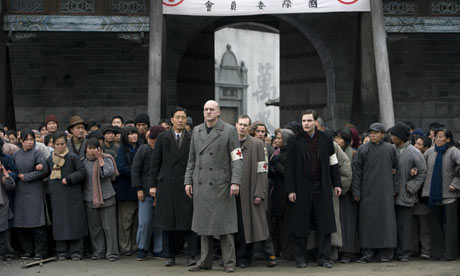
This is a very good German film with a great true story to tell. In the winter of 1937, a group of middle-class European residents in Nanking got together to form a safety zone that saved 200,000 Chinese citizens from the Japanese who under the influence of Emperor Hirohito's uncle, a general with the advancing army, were bent on razing the city. In the event,more than 300,000 men, women and children were murdered, and many thousands raped and mutilated in one of the greatest atrocities of the 20th century.
The morally involving movie is seen from the point of view of the stiff-necked German businessman, John Rabe (Ulrich Tukur), the initially reluctant leader of the Europeans. Head of the local Siemens factory, resident in China for 27 years and a Nazi party member, he kept a detailed diary of the events and, ironically, used the swastika as a cloak to save the lives of those threatened by Hitler's Asian allies. Rabe risked his life quite as much as Oskar Schindler did. Having died in obscurity in 1950, he, too, had to wait for posthumous recognition, in his case for opposing crimes that the Japanese still refuse to confront in all their enormity.
The film is scrupulously staged using German, English, Chinese and Japanese where appropriate, and unflinching in the presentation of horror, without being prurient. Racial stereotyping occurs only as a critical index of character.

